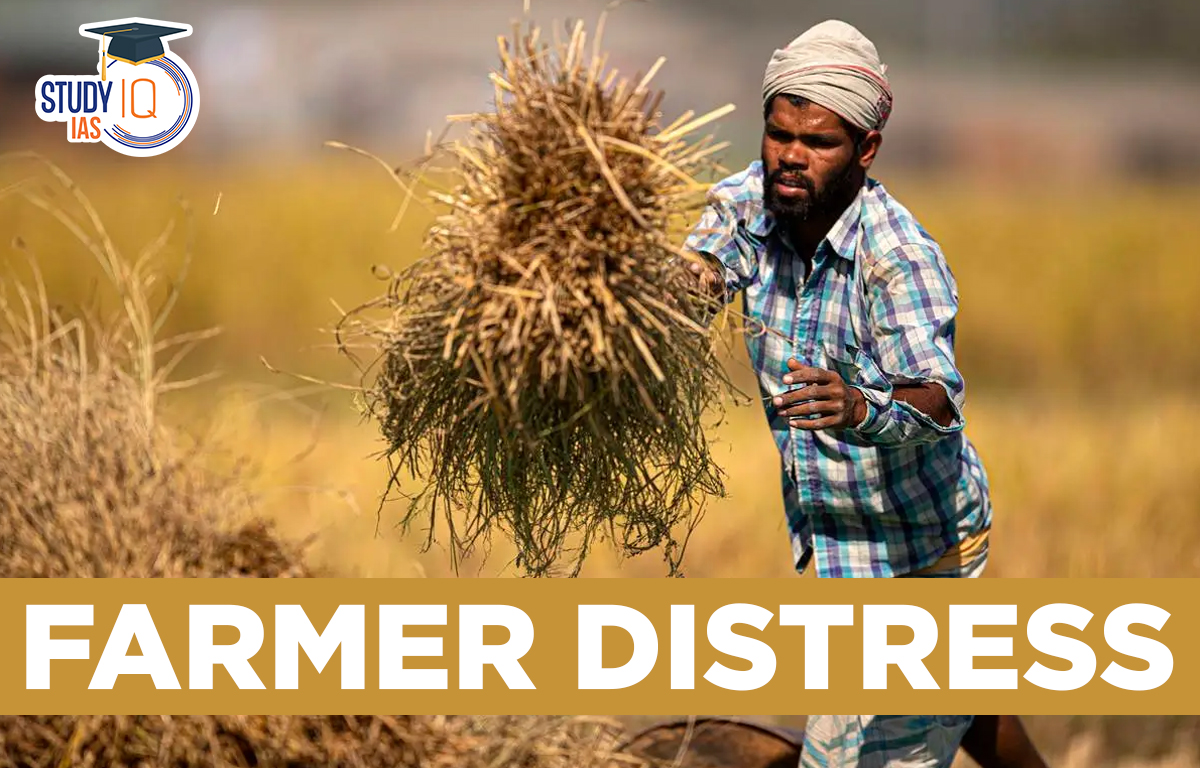Table of Contents
Context: Onion and potato cultivators in States of Uttar Pradesh, Maharashtra, and Gujarat are facing huge distress with their produce being sold at way below the cost of production.
More on the News
- Across these States, farmers face huge distress due to growing debts, with current prices in the wholesale market dipping.
- Untoward weather conditions, demonetisation in 2016, and finally the COVID-19 lockdowns for two years from 2020 that prevented produce from reaching towns and cities efficiently, have all led to debt.
- Farmers have been demanding immediate intervention of governments to address the crisis with permanent policies.
Why are the falling Prices of Onion and Potato distressing the Farmers?
- High production costs and low returns:
- When prices fall, farmers are unable to recover the costs of production, including the cost of seeds, fertilizers, labor, and transportation.
- This can lead to a decline in the farmers’ income, making it difficult for them to sustain their livelihoods and meet their financial obligations.
- Debt burden and poverty:
- Farmers often face significant debt burdens, and a decline in prices can make it harder for them to repay their loans.
- This can lead to a cycle of debt and poverty, which can have long-term consequences for the farmers and their families.
- Wider economic implications:
- The falling prices of onions and potatoes can have wider economic implications, as these crops are widely consumed by people across the country.
- The availability and affordability of these crops are critical for food security and can impact the cost of living for millions of people.
Several causal Factors behind the Persistent Farm Distress in India
- Dependence on Monsoon: Indian agriculture is heavily dependent on monsoon rains, which are unpredictable and unevenly distributed, leading to crop failures and low yields in drought-prone areas.
- Fragmented Landholdings: Small and fragmented landholdings make it difficult for farmers to adopt modern farming techniques, leading to low productivity and low incomes.
- Lack of Irrigation: Only about 45% of the net sown area in India is irrigated. Lack of irrigation facilities makes agriculture vulnerable to fluctuations in rainfall, leading to crop failures and low yields.
- Price Volatility: Farmers face price volatility due to fluctuations in demand and supply, and lack of a stable pricing policy. They are often forced to sell their produce at low prices due to lack of storage facilities and market access.
- High Input Costs: Farmers face high input costs, including seeds, fertilizers, pesticides, and labor, which cut into their profits.
- Inadequate Credit: Farmers face difficulty in obtaining credit at reasonable interest rates, which hampers their ability to invest in their farms and improve productivity.
- Climate Change: Climate change has led to erratic weather patterns, including prolonged droughts, floods, and extreme temperatures, which have further affected crop yields and agricultural productivity.
- Government Policies: Inadequate government policies and support, including insufficient subsidies and inadequate crop insurance, have contributed to the agrarian distress in India.
Effects of Farm Distress

Steps taken to Address Farm Distress
- Pradhan Mantri Annadata Aay Sanrakshan Abhiyan (PM-AASHA): This scheme aims to enable farmers realize the MSP in fuller measure via its three sub-schemes:
- Price Support Scheme (PSS): Physical procurement of pulses, oilseeds and Copra;
- Price Deficiency Payment Scheme (PDPS): Direct payment of the difference between the MSP and the selling/modal price;
- Private Procurement & Stockist Scheme (PPSS): Involves procurement by selected private agencies in pilot district/selected APMCs, for MSP notified oilseeds.
- SAMPADA Yojana: The Scheme for Agro-Marine Processing and Development of Agro-Processing Clusters (SAMPADA) is an umbrella scheme incorporating ongoing schemes like Mega Food Parks, Integrated Cold Chain and Value Addition Infrastructure, Food Safety and Quality Assurance Infrastructure, etc.
- Operation Greens: It aims to boost production and processing of tomato, onion and potato (TOP) as part of an objective to check price volatility in these three key kitchen staples. It will promote Farmer Producers Organizations (FPOs), agri-logistics, processing facilities and professional management.
- Agriculture Export Policy, 2018: It aims to double agricultural exports from present USD 30+ Billion to USD 60+ Billion by 2022 and reach USD 100 Billion in the next few years with a stable trade policy regime.
- Interest subvention for short term crop loans: It aims to provide agricultural credit at low interest rates.
- Model Agricultural Produce and Livestock Marketing Act (APLM), 2017: This is a model act that provides for progressive agricultural marketing reforms, including the setting up of markets in the private sector, allowing direct sales to exporters/processors and customers, farmer-consumer markets, e-trading, a unified single trading licence in a state, declaring warehouses/silos/cold storage as market sub-yards and the launch of the National Market for Agriculture.
- Draft Model Contract Farming Act, 2018 is an attempt to provide an enabling environment for contract farming to thrive.


 Daily Quiz 01 July 2025
Daily Quiz 01 July 2025
 China, Pakistan and Bangladesh Trilatera...
China, Pakistan and Bangladesh Trilatera...
 US Pulls Funding from GAVI-Global Vaccin...
US Pulls Funding from GAVI-Global Vaccin...





















